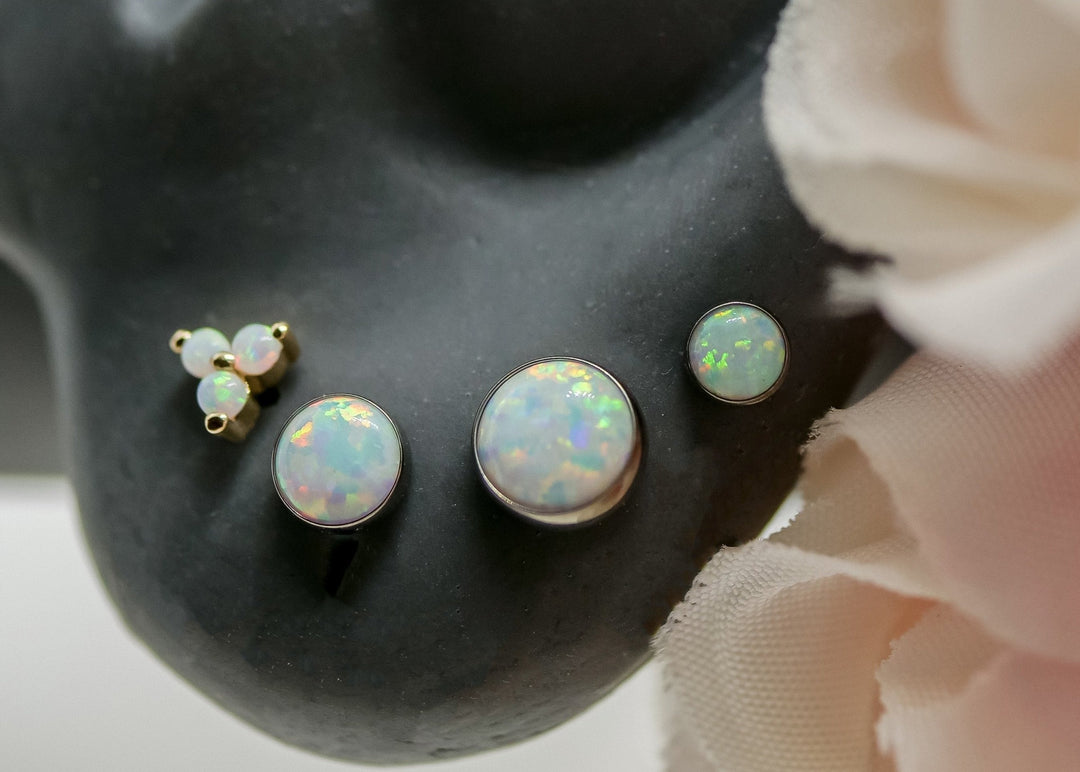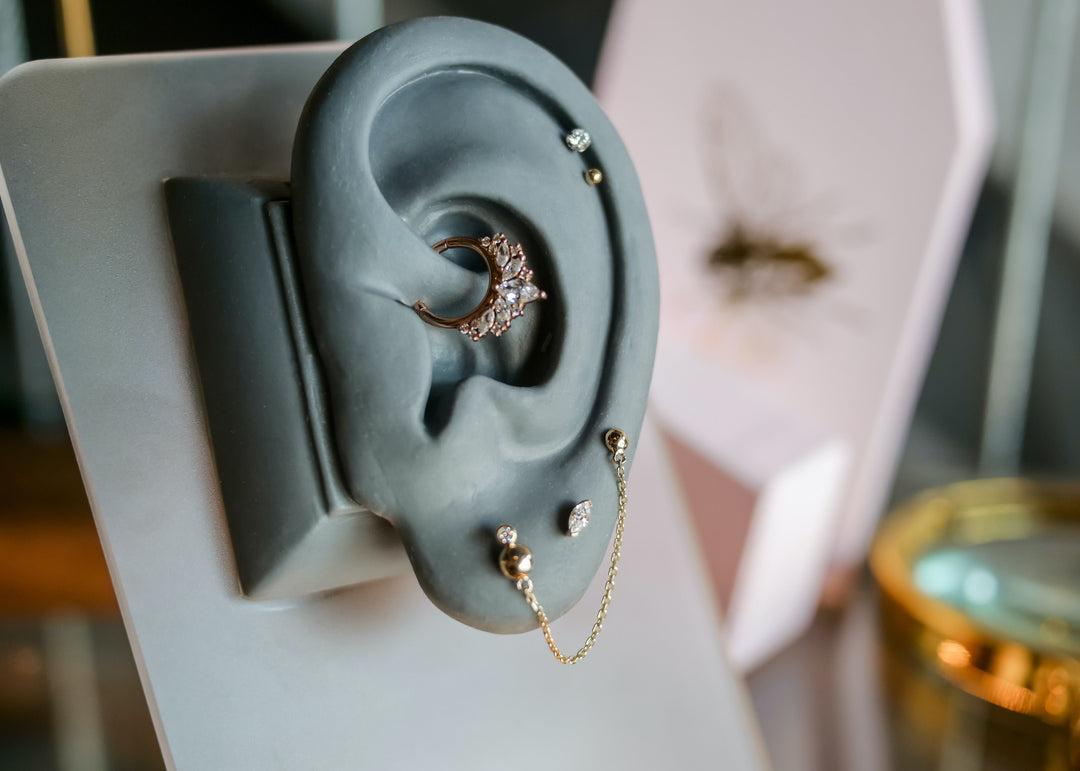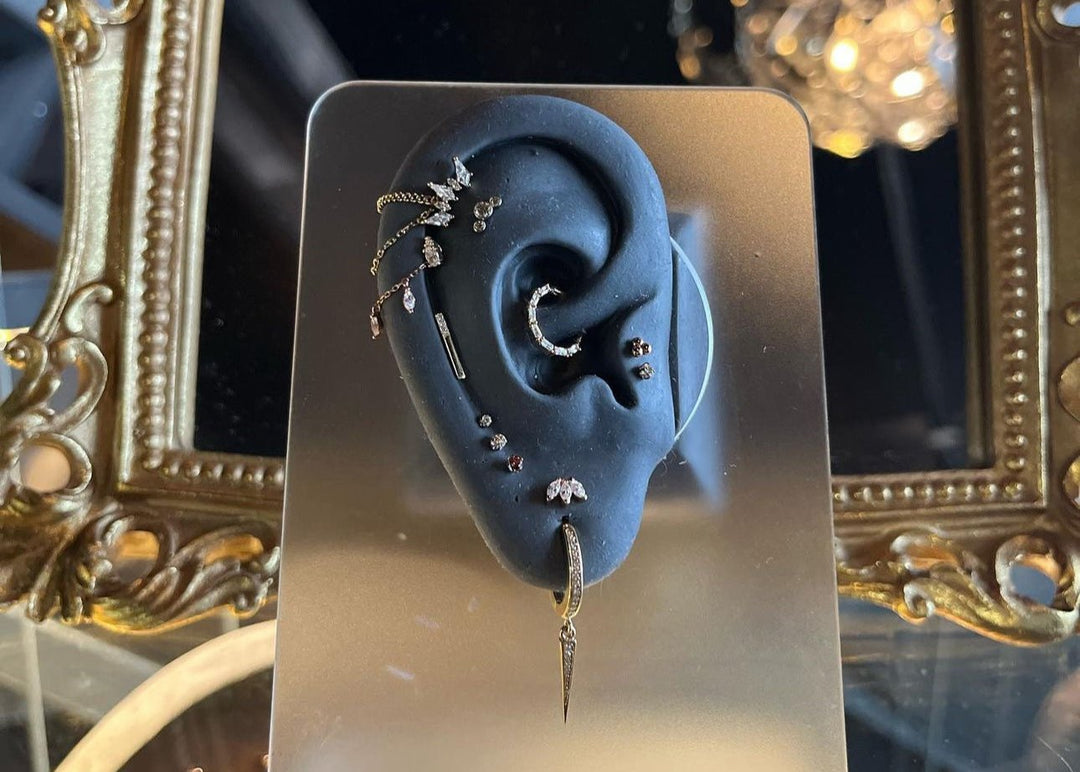When you’re ready to accessorize a fresh piercing, the sheer variety of jewelry available can be both exciting and overwhelming. Beyond style, there’s a world of science and safety behind the materials used in body jewelry—factors that can greatly influence how well your piercing heals and how comfortable it feels over the long run. Let’s explore the most popular metals and materials to help you choose the perfect piece for your new addition.
1. Implant-Grade Titanium: A Tried and True Favorite
- Why It’s Popular: Titanium is often considered the “gold standard” for initial piercings. Thanks to its hypoallergenic properties and corrosion-resistant surface, it’s a top choice for sensitive skin.
-
Benefits:
- Extremely lightweight and comfortable.
- Nickel-free, which reduces the risk of allergic reactions.
- Great for those prone to irritation or delayed healing.
- Style Considerations: Titanium pieces come in a sleek silver finish, but can be anodized into a variety of colors—perfect for customizing your look.
2. Surgical Stainless Steel: Affordable and Accessible
- Why It’s Popular: Surgical stainless steel is widely available and budget-friendly, making it a common choice for both first-time and long-term wearers.
-
Benefits:
- Durable and resistant to tarnish.
- Smooth finish that’s gentle on healing piercings.
- Important Note: Not all stainless steel is created equal. Look for 316L or 316LVM implant-grade steel for the safest results. These options contain very low amounts of nickel and are processed to minimize irritation.
3. Solid Gold: A Timeless Luxury
- Why It’s Popular: Gold has always been associated with luxury and timeless style. High-quality gold jewelry can offer a classic, elegant touch to your piercing.
-
Benefits:
- Warm, rich hue that never goes out of style.
- Ideal for those who want a premium, long-lasting piece.
- Important Note: For a fresh piercing, opt for 14k or higher solid gold. Avoid gold-plated pieces, as plating can wear off and expose lower-quality metals beneath, potentially causing irritation.
4. Niobium: The Hidden Gem of Hypoallergenics
- Why It’s Popular: Less known than titanium or gold, niobium is another highly biocompatible metal that’s perfect for sensitive piercings.
-
Benefits:
- Naturally nickel-free and non-irritating.
- Can be anodized to produce a range of beautiful colors.
- Style Considerations: Niobium jewelry often comes in understated shapes and styles, making it a great option for those seeking something unique yet low-key.
5. Biocompatible Plastics: PTFE & BioFlex
- Why They’re Popular: For those with metal sensitivities or who need flexible, lightweight options, biocompatible plastics (like PTFE and BioFlex) can be ideal.
-
Benefits:
- Flexible, reducing stress on healing tissue—perfect for piercings in areas that move or rub, like navel or eyebrow piercings.
- Completely metal-free, suitable for extremely sensitive skin.
- Practical Uses: Often used as a “retainer” to keep a piercing open during surgery or medical imaging, or to comply with dress codes that may prohibit visible metal jewelry.
6. Glass: A Smooth, Stylish Alternative
- Why It’s Popular: Glass—specifically borosilicate or soda-lime glass—is non-porous, hypoallergenic, and easy to sterilize, making it another safe material option.
-
Benefits:
- Inert and biocompatible, meaning it won’t corrode or leach substances.
- Smooth surface helps minimize irritation.
- Style Considerations: Available in vibrant colors, patterns, and playful shapes. Though heavier than some metals, glass can become a fashionable statement piece once your piercing is fully healed.
How to Make the Right Choice for You
- Consider Your Sensitivities: If you know you have metal allergies, investing in titanium, niobium, or biocompatible plastics may save you a lot of discomfort.
- Prioritize Initial Healing: For fresh piercings, choosing high-quality, hypoallergenic metals like titanium or implant-grade stainless steel can help ensure a smoother healing process.
- Think About Your Lifestyle: If you’re active or often wear headphones, hats, or uniforms that interact with your jewelry, flexible materials (like PTFE) or lighter metals may be more comfortable.
- Budget Wisely: While high-quality metals may cost more upfront, they can save you from replacing lower-quality pieces due to irritation, tarnish, or breakage in the long run.
Caring for Your Chosen Jewelry
No matter which material you select, proper aftercare is key. Follow your piercer’s cleaning instructions diligently—usually involving a saline solution or gentle, fragrance-free soap. Keep the area clean, dry, and free from unnecessary contact or friction. As your piercing heals, be sure to check for signs of irritation such as redness, discharge, or persistent soreness. If issues arise, consult a piercing professional for guidance.
Choosing the right metal or material for your new piercing is about more than aesthetics—it’s about setting yourself up for a smooth healing journey and long-lasting comfort. From the safety and durability of titanium to the timeless elegance of solid gold, there’s an option to suit every taste, need, and budget. By making informed choices, you’ll not only protect your investment but also ensure that your new piece of body art reflects both your personal style and your commitment to quality.






